

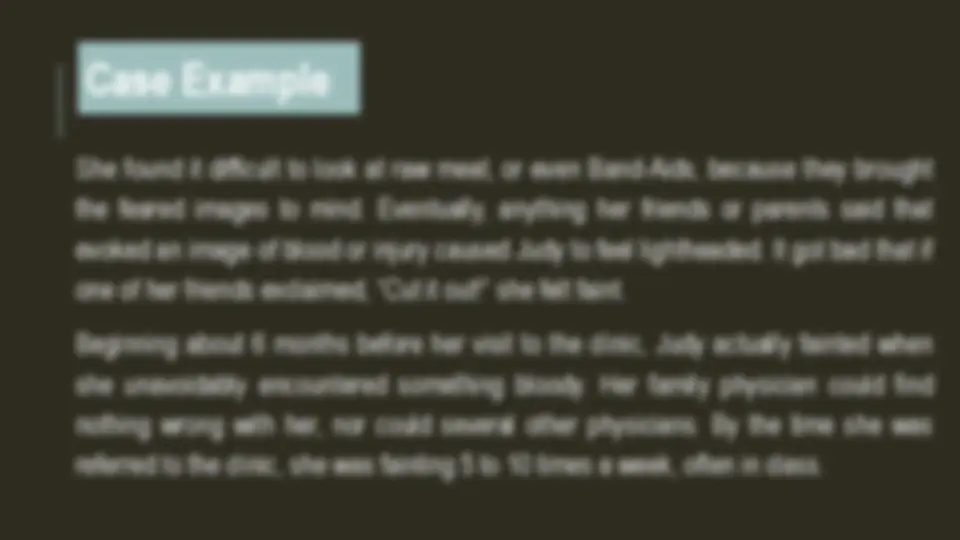

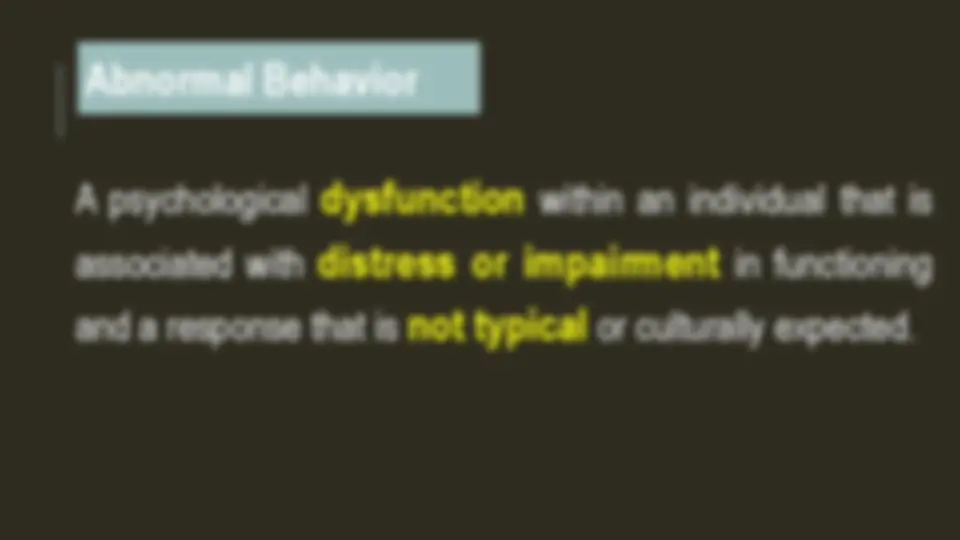

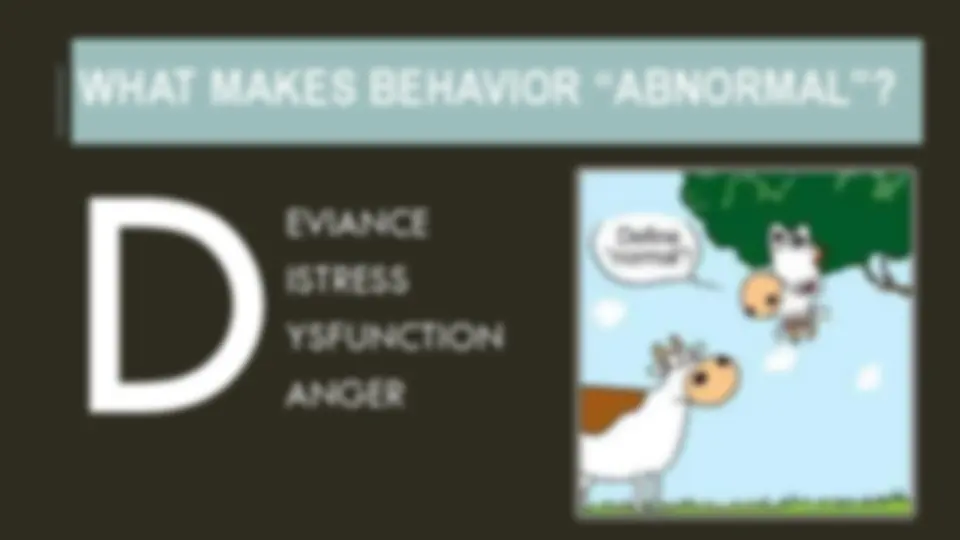
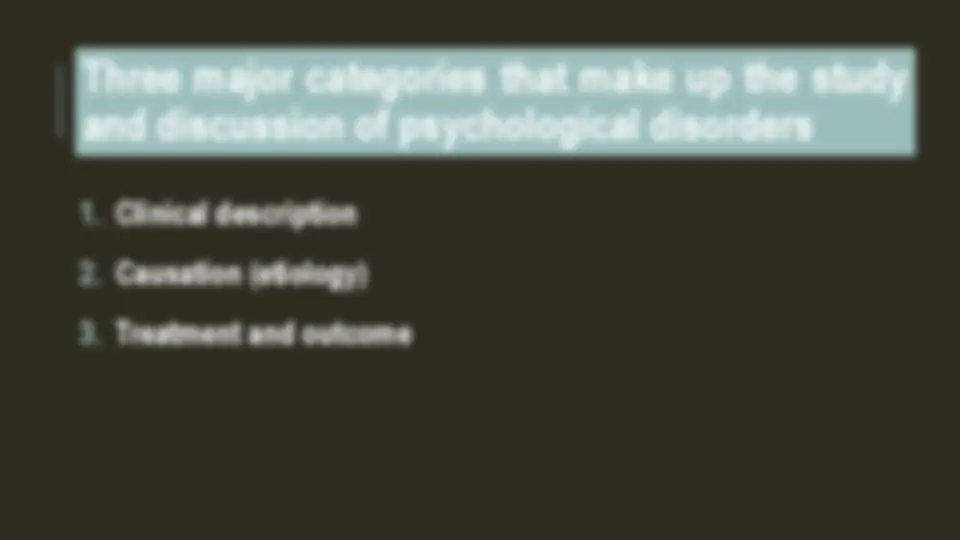
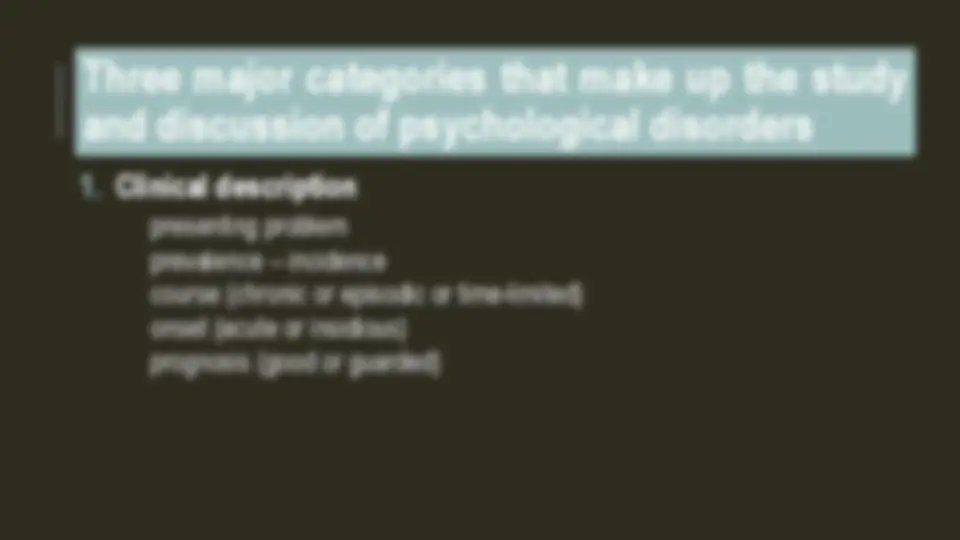
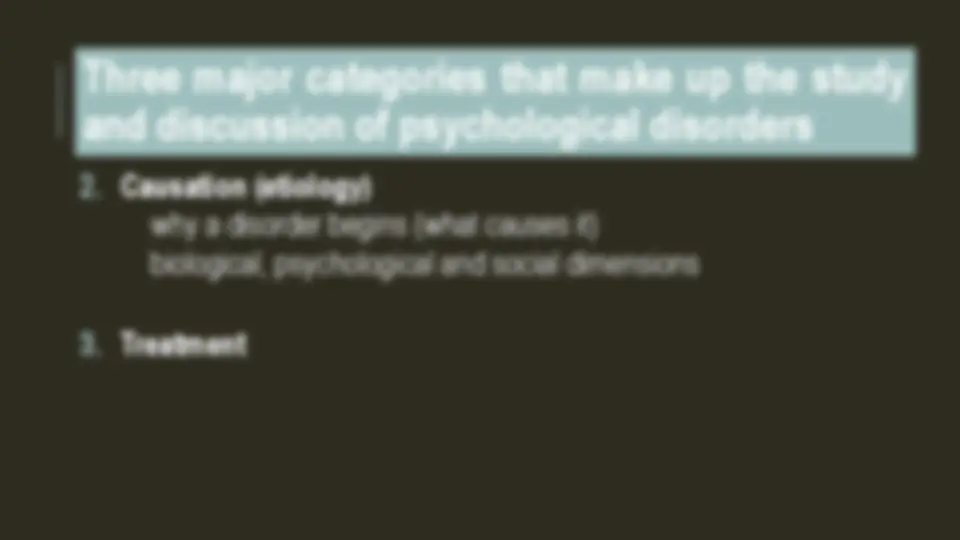



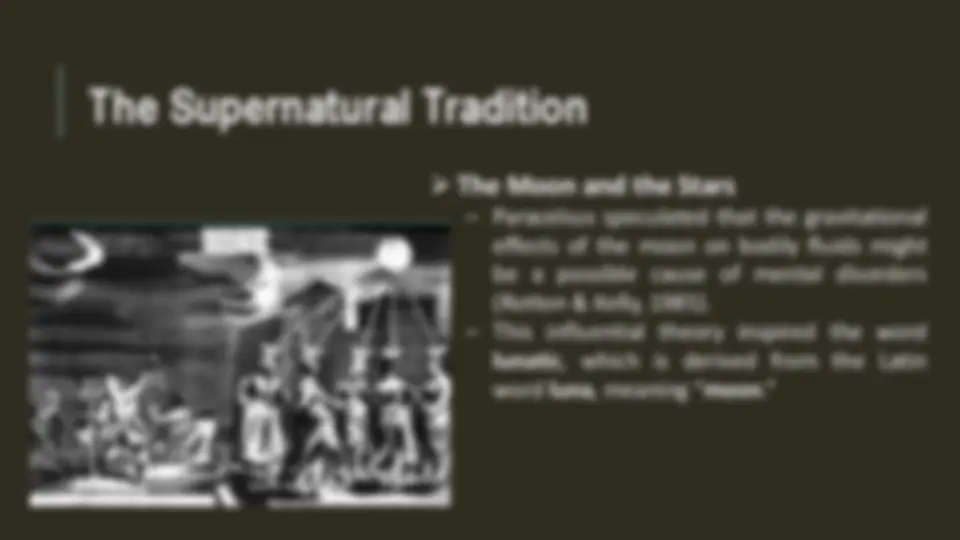


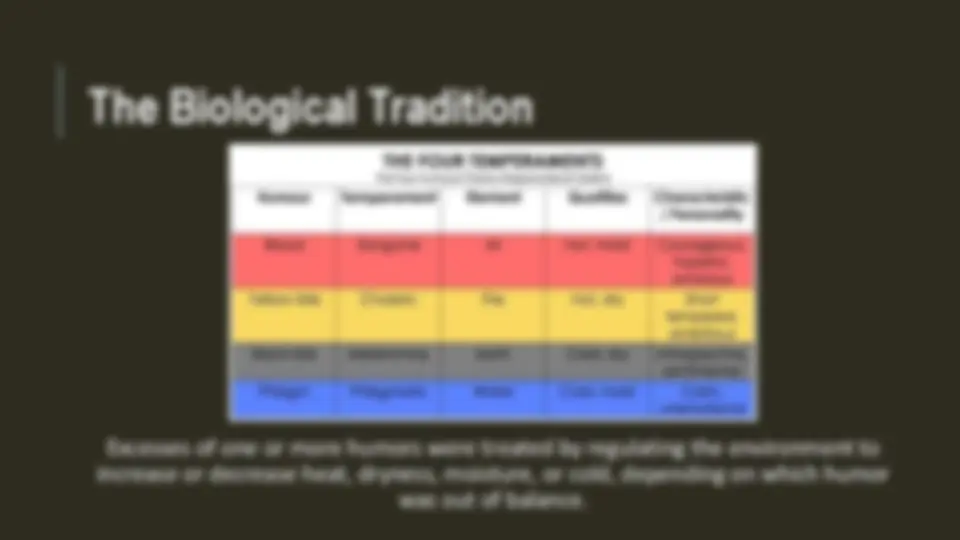

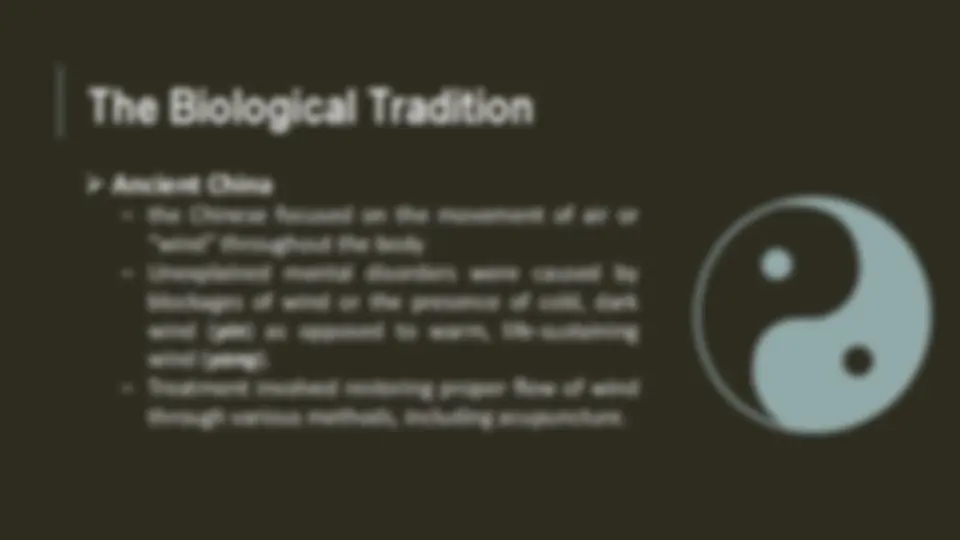


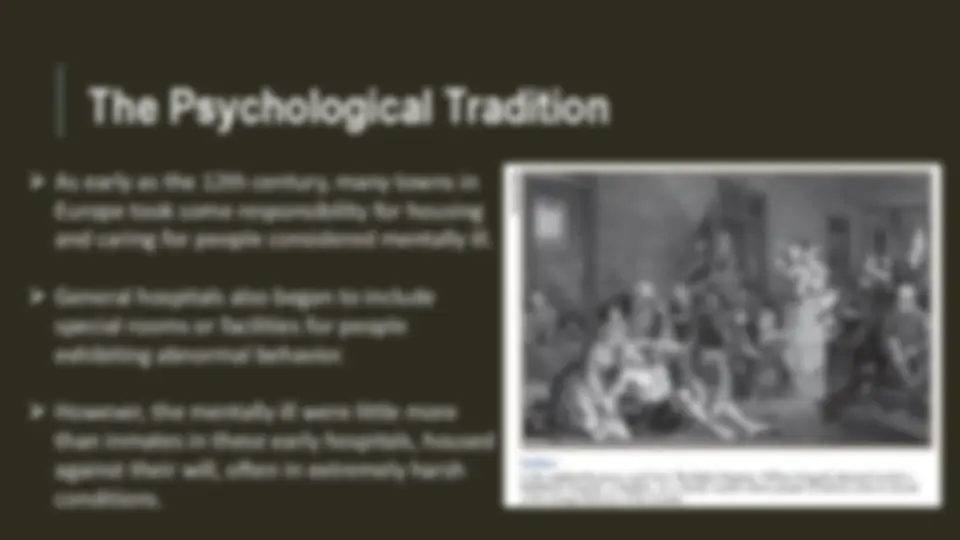
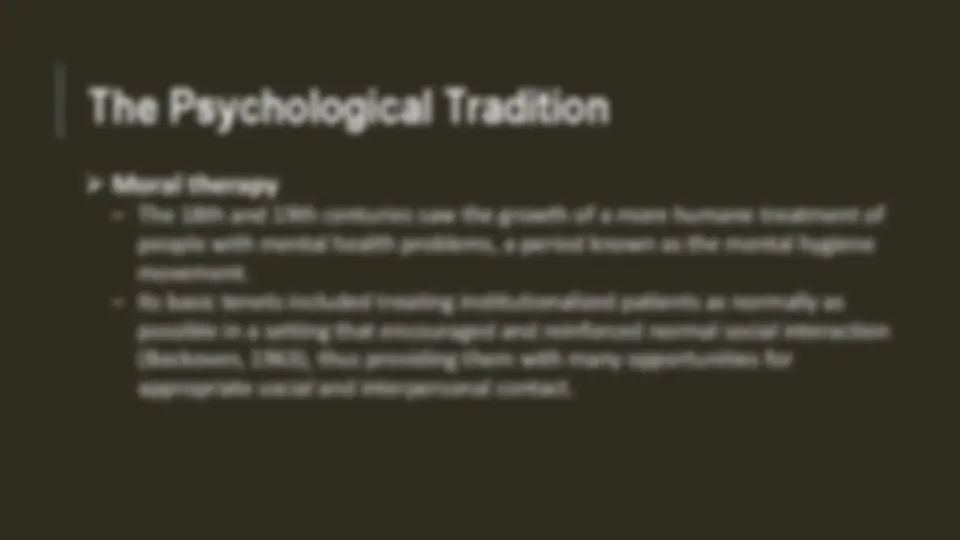
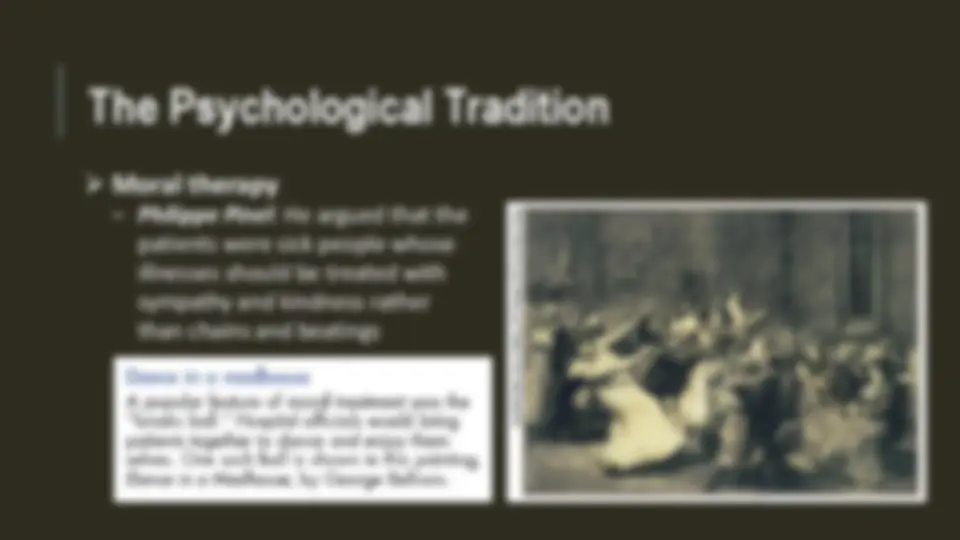
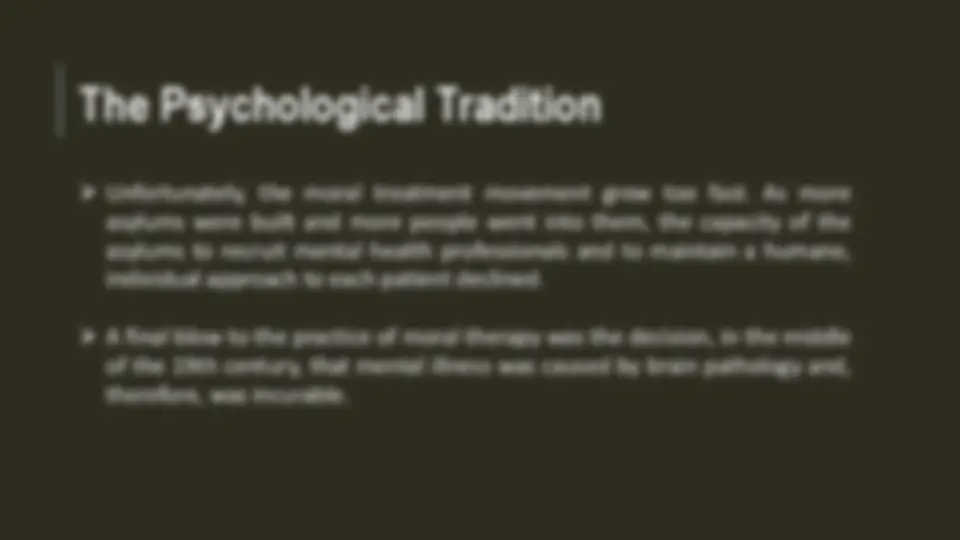

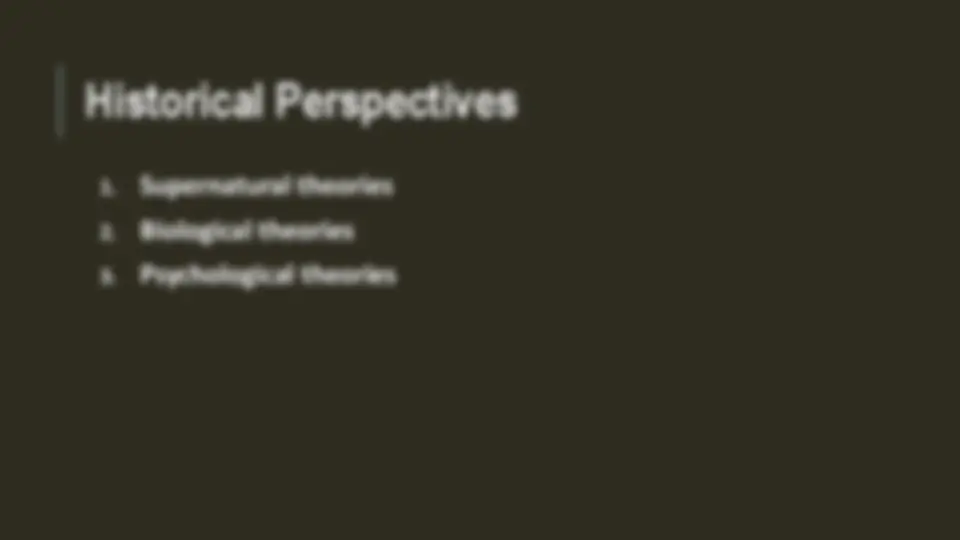
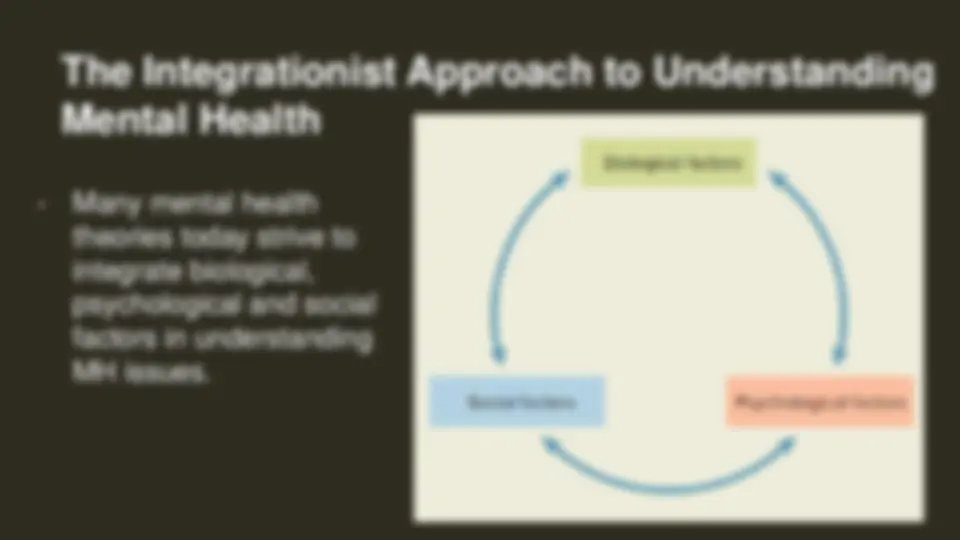


Study with the several resources on Docsity

Earn points by helping other students or get them with a premium plan


Prepare for your exams
Study with the several resources on Docsity

Earn points to download
Earn points by helping other students or get them with a premium plan
Community
Ask the community for help and clear up your study doubts
Discover the best universities in your country according to Docsity users
Free resources
Download our free guides on studying techniques, anxiety management strategies, and thesis advice from Docsity tutors
study notes for chapter 1 abpsych
Typology: Study notes
1 / 35

This page cannot be seen from the preview
Don't miss anything!




























PSYCH 110 ABNORMAL PSYCHOLOGY
TOPIC 1
She found it difficult to look at raw meat, or even Band-Aids, because they brought the feared images to mind. Eventually, anything her friends or parents said that evoked an image of blood or injury caused Judy to feel lightheaded. It got bad that if one of her friends exclaimed, “Cut it out!” she felt faint. Beginning about 6 months before her visit to the clinic, Judy actually fainted when she unavoidably encountered something bloody. Her family physician could find nothing wrong with her, nor could several other physicians. By the time she was referred to the clinic, she was fainting 5 to 10 times a week, often in class. Case Example
Clearly, this was problematic for her and disruptive in school; each time Judy fainted, the other students flocked around her, trying to help, and class was interrupted. Because no one could find anything wrong with her, the principal finally concluded that she was being manipulative and suspended her from school, even though she was an honor student. Case Example
A psychological dysfunction within an individual that is associated with distress or impairment in functioning and a response that is not typical or culturally expected. Abnormal Behavior
A psychological dysfunction within an individual that is associated with distress or impairment in functioning and a response that is not typical or culturally expected. Abnormal Behavior
WHAT MAKES BEHAVIOR “ABNORMAL”? EVIANCE ISTRESS YSFUNCTION ANGER
Three major categories that make up the study and discussion of psychological disorders
presenting problem prevalence – incidence course (chronic or episodic or time-limited) onset (acute or insidious) prognosis (good or guarded) Three major categories that make up the study and discussion of psychological disorders
HISTORICAL CONCEPTIONS OF ABNORMAL BEHAVIOR
Three types of theories have been used to explain abnormal behavior: ➢ Supernatural theories : abnormal behavior as a result of divine intervention, curses, demonic possession, and personal sin. ➢ Biological theories : abnormal behavior as similar to physical diseases, caused by the breakdown of systems in the body. ➢ Psychological theories : abnormal behavior as a result of traumas such as bereavement, or of chronic stress. Historical Perspectives
The Supernatural Tradition ➢ Stress and melancholy ‒ insanity was a natural phenomenon, caused by mental or emotional stress, and that it was curable ‒ Common treatments were rest, sleep, and a healthy and happy environment. Other treatments included baths, ointments, and various potions.
The Supernatural Tradition ➢ Mass hysteria ‒ large-scale outbreaks of bizarre behavior ‒ known by several names, including Saint Vitus’s Dance and tarantism ‒ may simply demonstrate the phenomenon of emotion contagion , in which the experience of an emotion seems to spread to those around us